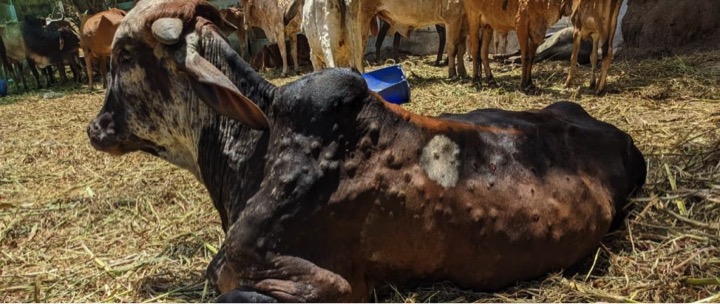The Gujarat government has started vaccinating cattle against the dreaded Lumpy Skin Disease (LSD) that is found in milch cattle, the State agriculture and animal husbandry department said.
Caused by the pox virus and believed to be spread by blood-feeding insects such as mosquitoes, bees/flies etc., Gujarat had reported LSD cases initially in June-July last year.
Raghavji Patel, Minister for Agriculture and Animal Husbandry, Gujarat,, said LSD cases were reported from 11 districts in the Saurashtra-Kutch and South Gujarat regions of the State. “The symptoms of Lumpy Skin Disease have been reported in cattle in the districts of Devbhumi Dwarka, Jamnagar, Kutch, Rajkot, Porbandar, Surendranagar, Junagadh, Morbi, Bhavnagar, Amreli, and Surat. So far, about 3 lakh cattle have been vaccinated,” he said. Gujarat has nearly 95 lakh cows and buffaloes.
Hester starts vaccine supply
Ahmedabad-based animal vaccine maker Hester Biosciences Ltd. is the first to develop and make available a vaccine for LSD in India.
It has started supplies to Gujarat after it secured authorisation from the Union Ministry of Animal Husbandry to repurpose its goat pox vaccine for LSD.
Hester Biosciences, in a statement on Wednesday, said that the government advisories have prescribed to “use the Goat Pox vaccine in higher dosage to protect, prevent and reduce mortality due to LSD.
“Hester has adequate ready stocks of its Goat Pox vaccine as well as of its other complementing products. It has geared up to manufacture additional quantities for immunisation and prevention of LSD, as well as its complementary products should there be an outbreak,” it said, adding that the company also manufactures complementing therapies like antibiotic CuRx Inj (Enrofloxacin+Ketoprofen), which are very effective and helpful in the current LSD outbreak.
LSD symptoms
The LSD symptoms are mainly the inflammation or nodules on the skin and chronic debility in affected animals; reduced milk production, poor growth, infertility and abortion. It leads to the death of the animal in extreme circumstances.



























